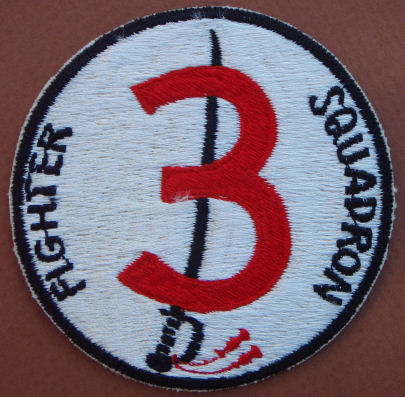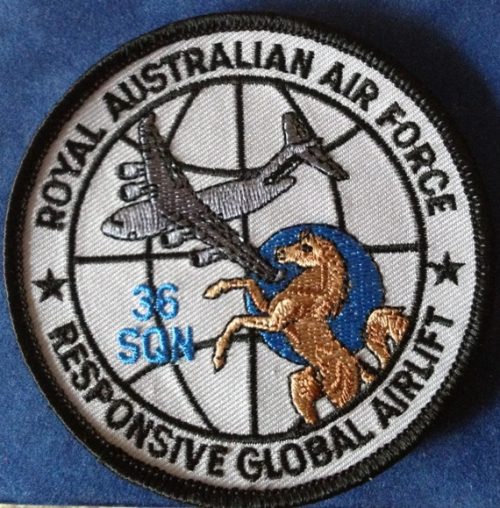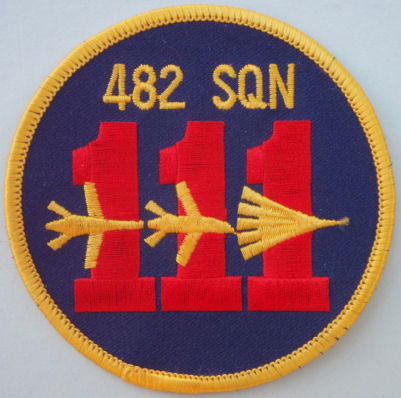Description
Description: Unofficial Squadron Patch – No. 3 Squadron, RAAF
Condition: Very Good
Comments: Unofficial Squadron Patch – No. 3 Squadron, RAAF.
No. 3 Squadron is a Royal Australian Air Force fighter squadron. It was first formed in 1916 and currently operates F/A-18 Hornet aircraft from RAAF Base Williamtown, near Newcastle, New South Wales.
No. 3 Squadron Australian Flying Corps was formed at Point Cook, Victoria on 19 September 1916. Shortly afterwards, the unit moved to England for training, before becoming the first AFC unit deployed to France, in 1917, equipped with the R.E.8 two-seat reconnaissance/general purpose aircraft. To avoid confusion with the British No. 3 Squadron RFC, it was known to the British military as “No. 69 Squadron RFC”, until well into 1918. This terminology was never accepted by the squadron or the Australian Imperial Force.
The squadron participated in bombing, artillery spotting and reconnaissance missions supporting ANZAC and other British Empire ground forces, and by the end of the War had flown over 10,000 operational hours, shooting down 51 enemy aircraft.
In April 1918, the squadron under Major David Blake, became responsible for the remains of the “Red Baron”, Manfred von Richthofen, after he was shot down in its sector. Blake initially believed that one of the squadron’s R.E.8s may have been responsible but later endorsed the theory that an Australian anti-aircraft machine gunner actually shot down the Red Baron.
During World War II, No. 3 squadron served in the Mediterranean Theatre as part of the Allied Desert Air Force (later the First Tactical Air Force), supporting the 8th Army.
The unit first saw action over Egypt in late 1940, operating obsolete Gloster Gladiator biplane fighters against the Italian Regia Aeronautica. It briefly converted to Hawker Hurricanes, and then flew P-40 Tomahawks and Kittyhawks from 1941, often engaging in intense air battles with the German Luftwaffe. No. 3 Squadron’s longest-serving Commanding Officer (CO) during the war was Squadron Leader Bobby Gibbes, whose tour lasted from February 1942 to April 1943.
Gibbes was replaced by Squadron Leader Brian Eaton, who led the unit until February 1944. During this period, No. 3 Squadron took part in the Allied invasions of Sicily and Italy. It re-equipped with P-51 Mustangs in November 1944 and continued to operate in Italy until the end of the European war in May 1945. No. 3 Squadron’s record of 217.5 enemy aircraft destroyed made it the highest-scoring RAAF fighter squadron. It was disbanded after the war and No. 4 Squadron RAAF was renamed No. 3.
The squadron re-formed on 1 March 1956 at RAAF Base Williamtown, New South Wales. It operated CA-27 Sabres out of Butterworth, Malaya, from 1958 engaging in warlike operations associated with the Malayan Emergency and Konfrontasi. The squadron was disbanded in 1967.
As Australian involvement in the Vietnam War intensified, 3 Sqn was reformed and equipped with Mirage IIIO fighters at Wlliamtown in August-September 1967. An acting CO, Wing Commander Vance Drummond, was killed during this period in “2v2” air combat manoeuvres at No. 2 Operational Conversion Unit RAAF. Wing Commander Jake Newham (later RAAF Chief of Air Staff) became the CO. No. 3 Squadron’s role was fighter ground attack and its aircraft were camouflaged and fitted with a Doppler navigation system and radar with additional ground mapping and terrain avoidance capability.
The squadron continues to operate the Hornets from its home base at RAAF Base Williamtown. In February 2002, during the Afghanistan War, elements of 3 Sqn were deployed to Diego Garcia, in the Indian Ocean, to relieve 77 Squadron, providing air defence for the Coalition base there.







